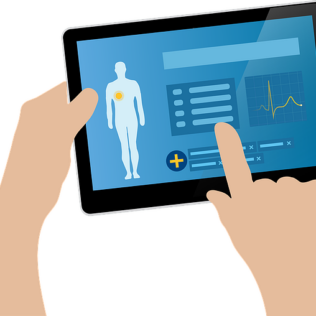Electronic Medical Records are flanked with design flaws that subject patients to treatment mistakes and harm. These errors are incredibly common and over 80% of the reported errors involve strokes, massive hemorrhages, lost critical lab results, overdoses, misdiagnosis, and many deaths. Various design issues, ranging from default selections and problems with drug orders to difficulties with displays and data entry contribute to patient harm.
Poorly Designed Software
The poor designs and malfunctions in EMRs are reflected as a screen with small font sizes and unfriendly user interfaces. Distracting and extraneous information has led pharmacists to overlook changes in medication orders. One report described how health care personnel found it difficult to read orders on the computer screen and one patient suffered a life-threatening acute asthma attack because he was given the wrong drug. The poorly designed software seems to be flanked with poor user interfaces, especially when it comes to the selection of what data is important to display and drug orders to make and this has contributed to patient harm.
Also, extra work is needed owing to the many prompts with multiple choice answers that demand several clicks to complete an action. A simple test has to be done through multiple prompts, and another set of clicks is needed to write a prescription- an exercise that use to take less than a minute. It was the job of assistants to type, file, or mail results but with EMRs, the burden is on clinicians and the process has to be completed during office visits or as EMRs call them “encounters.” It’s easy for the wrong button to be clicked and often the effects are nothing short of catastrophic.
For example, the U.S tends to weigh in pounds, but the EMR allowed healthcare personnel to record a child’s weight in kilograms or pounds. If the weight is measured in pounds and then entered in the system as kilograms, it doubles the patient’s weight. Considering that medication is given based on a patient’s weight that would result in an unbelievable overdose.
In some cases, information can be sent over the system and it does not go anywhere at all, delaying medical care. This could also result in incomplete information that would affect diagnosis and treatment.
Attention Needed by Patients Shifted to Computer Screens
In this digital age, it would seem a natural development that health records would be electronic. Electronic medicals records were developed to improve the efficiency, quality, and safety of healthcare by providing vital patient information instantly. But the process has been flanked with design flaws and errors. Instead of the EHR acting as an aid to doctors, they now function primarily as documentation for quality reporting and billing. The system in most cases does not work as the doctors would expect and this means that they have to spend too much time wrestling with the computer instead of directly communicating with the patient. During an appointment, the attention of doctors and nurses is focused on the computer screens instead of the patient. By the time the providers turn back to the patient, they will have spent close to half of the appointment time serving the needs of the electronic medical record. Proper diagnosis and treatment require doctors and nurses to listen actively to their patients. With all the design flaws, EMRs are the medical equivalent of texting while driving, failing to improve care and sucking the soul out of the practice.
No Regulation
In 1997, EHR manufacturers convinced the FDA that innovation would be inhibited by oversight of its products. This effort was backed by several medical societies and HIT enthusiasts. Since then, EHRs have enjoyed a regulatory-free zone for usability and safety. Experts argue that big steps have been taken in innovating the software but these systems would not be viewed as user-friendly and patient safety has never been part of EMR certification. Even more strange is that in 2015, the EHR industry again asked the FDA to remove more of the oversight with the identical claim that regulations would stand in the way of innovation.
Many healthcare personnel acknowledges that the EHR is an incredibly powerful tool that can do tremendous things but only if could deliver on its promise of making patient information readily available and improving care. It wouldn’t make sense to go back to the old days of paper-only records. Instead, EHR system vendors should consider correcting the current design problems to avoid subjecting patients to harm.

